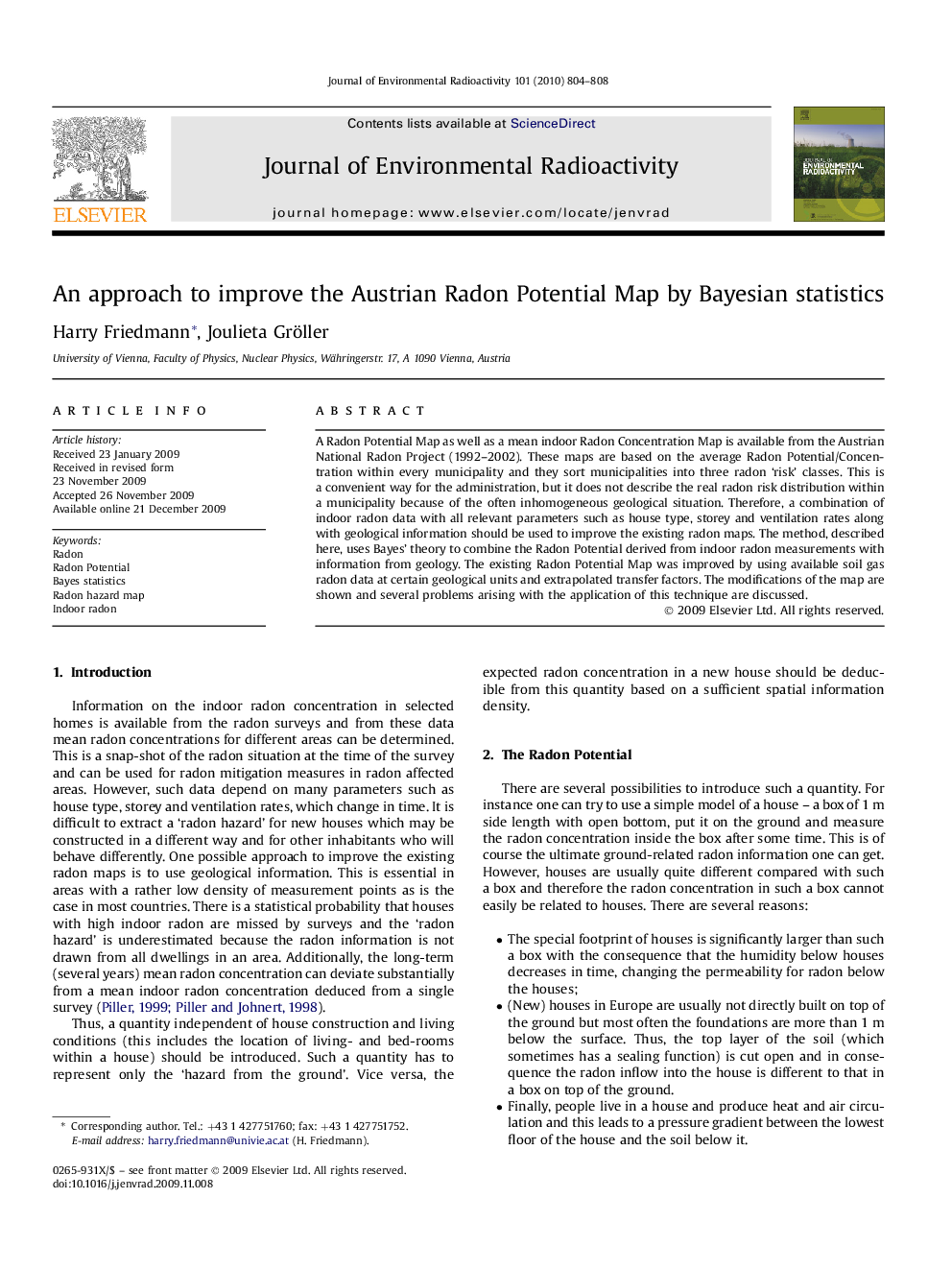| Article ID | Journal | Published Year | Pages | File Type |
|---|---|---|---|---|
| 1738666 | Journal of Environmental Radioactivity | 2010 | 5 Pages |
A Radon Potential Map as well as a mean indoor Radon Concentration Map is available from the Austrian National Radon Project (1992–2002). These maps are based on the average Radon Potential/Concentration within every municipality and they sort municipalities into three radon ‘risk’ classes. This is a convenient way for the administration, but it does not describe the real radon risk distribution within a municipality because of the often inhomogeneous geological situation. Therefore, a combination of indoor radon data with all relevant parameters such as house type, storey and ventilation rates along with geological information should be used to improve the existing radon maps. The method, described here, uses Bayes' theory to combine the Radon Potential derived from indoor radon measurements with information from geology. The existing Radon Potential Map was improved by using available soil gas radon data at certain geological units and extrapolated transfer factors. The modifications of the map are shown and several problems arising with the application of this technique are discussed.
